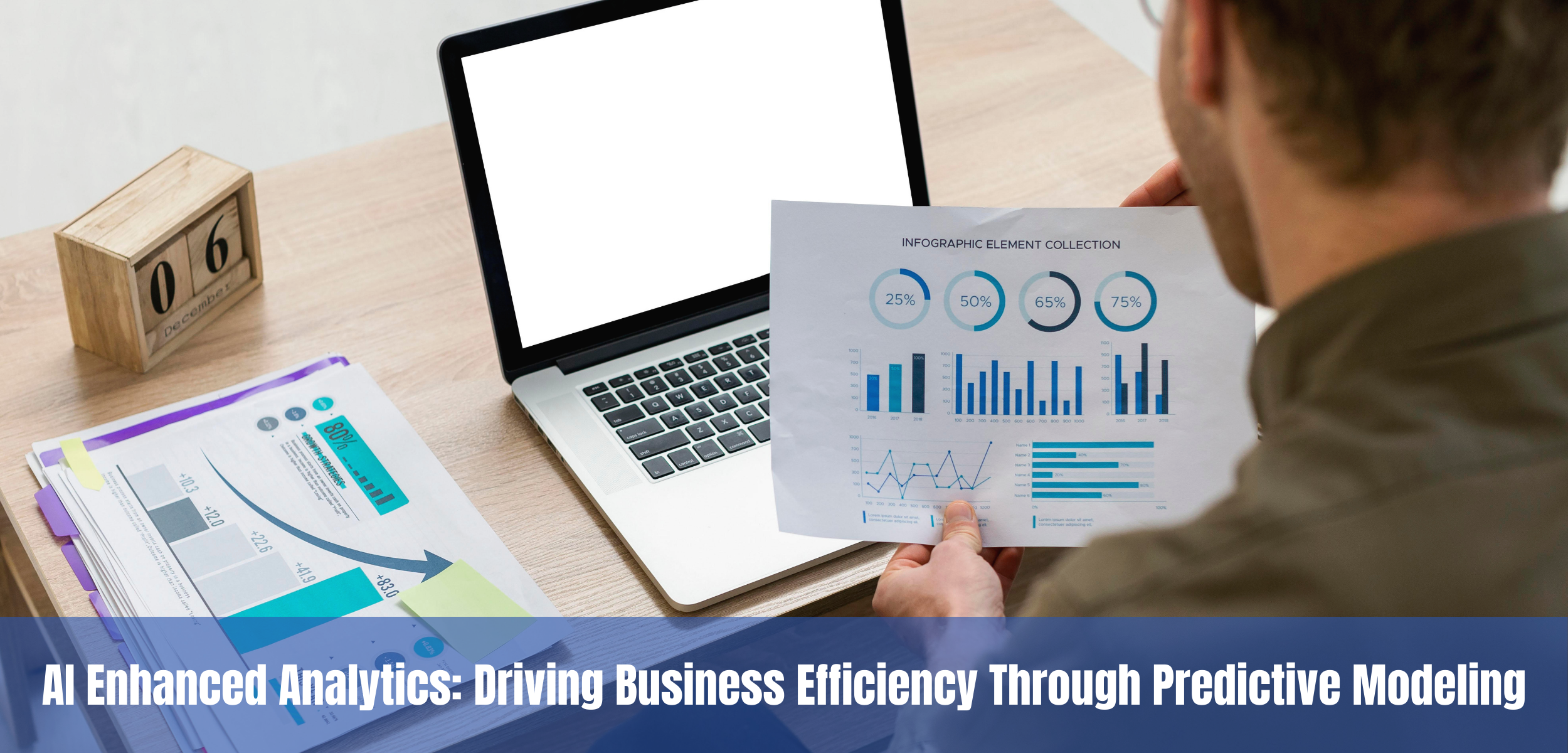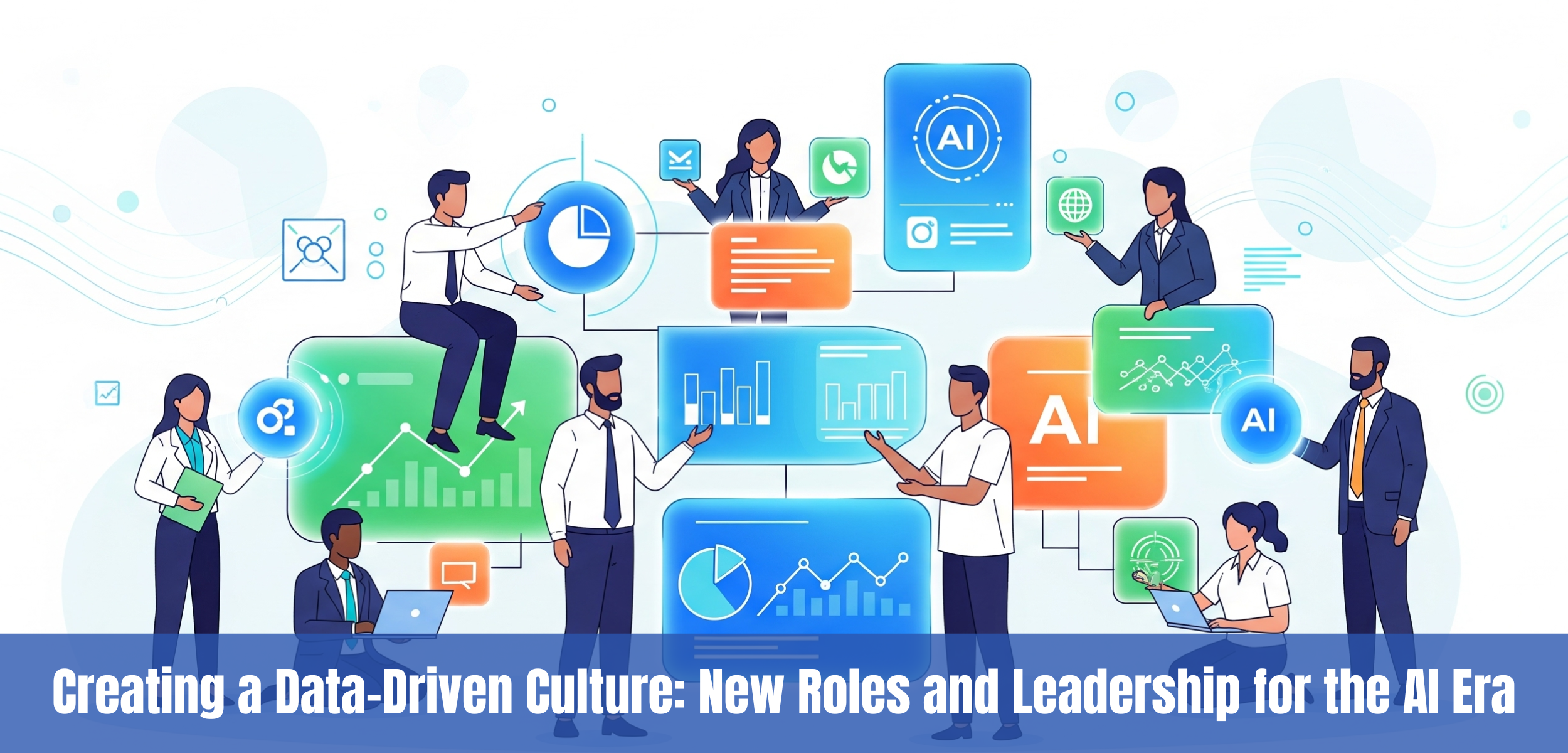In an era defined by real-time data streams and AI transformation, enterprises are under growing pressure to make faster, smarter, and more strategic decisions. As traditional data analytics methods struggle to scale with the complexity and volume of data, AI-enhanced predictive modeling emerges as a powerful solution. Leveraging machine learning and advanced algorithms, predictive analytics is transforming business operations by delivering actionable foresight.
This article explores how AI-powered predictive modeling is driving efficiency, improving decision-making, and positioning organizations for sustained competitive advantage.
What is Predictive Modeling in Business Analytics?
Predictive modeling uses historical data, statistical techniques, and machine learning algorithms to forecast future outcomes. It identifies patterns in existing datasets to predict scenarios such as customer behavior, market trends, equipment failure, and financial risks.
A classic example: retailers use predictive models to anticipate product demand and manage inventory accordingly. Financial institutions apply these models to assess credit risks and detect fraud. In healthcare, patient data is analyzed to predict potential medical outcomes, improving clinical decision-making.
The value of predictive analytics is evident in its widespread adoption. A study by McKinsey revealed that organizations leveraging predictive analytics can boost their operating performance by 10-15%. Additionally, 72% of executives believe that predictive analytics can deliver a competitive edge. (Source: McKinsey)
The Role of AI in Enhancing Predictive Analytics
While traditional predictive models rely heavily on statistical methods and human intervention, AI augments these capabilities with automation, speed, and scale.
Key Enhancements with AI:
- Machine Learning (ML): ML algorithms autonomously learn from data, improving prediction accuracy over time.
- Deep Learning: Handles complex patterns in high-dimensional data, ideal for scenarios like image or speech recognition.
- Natural Language Processing (NLP): Enables the extraction of insights from unstructured data sources such as emails, documents, and social media.
- Real-Time Processing: AI models can operate continuously and adapt to new data inputs in real-time.
For example, Amazon leverages AI-driven predictive models to forecast product demand across regions with remarkable precision, reducing warehousing costs and improving customer satisfaction.
Business Benefits of AI-Enhanced Predicted Modeling
AI-driven predictive analytics is more than a technological upgrade—it's a strategic capability. Organizations adopting AI-enhanced analytics report improvements across multiple performance metrics.
Key Benefits:
- Higher Forecast Accuracy: AI models consistently outperform manual forecasts, especially in dynamic markets.
- Operational Efficiency: By predicting maintenance needs or process failures, businesses avoid costly downtime.
- Personalized Experiences: Retailers use customer behavior predictions to personalize marketing, boosting engagement and loyalty.
- Proactive Risk Management: Financial institutions detect fraud earlier and assess risks with greater precision.
- Optimized Resource Allocation: Businesses can allocate manpower, inventory, and budget more effectively.
Comparison Table: Traditional vs. AI-Enhanced Predictive Analytics
|
Feature |
Traditional Analytics |
AI-Enhanced Analytics |
|
Data Volume Handling |
Limited |
Scalable to Big Data |
|
Speed |
Slower |
Real-time Insights |
|
Accuracy |
Moderate |
High (with continuous learning) |
|
Human Intervention |
High |
Low to Moderate |
|
Use of Unstructured Data |
Minimal |
Extensive (via NLP) |
Key AI Tools for Predictive Analytics
Whether you're just getting started with predictive modeling or expanding it across your organization, these AI platforms can help streamline the process. Below is a curated list of top tools, what they offer, and how to make the most of them.
- Key Features: Real-time decision automation, integrated AI agents, secure ops-layer deployment
- Best For: Enterprise-scale operational analytics
- How to Use: Connect operational datasets → Configure AI agents → Surface insights via dashboards → Act with human-in-the-loop or automation
- Key Features: AutoML, scalable cloud training, DevOps for ML
- Best For: Microsoft ecosystem users
- How to Use: Prepare data in Azure → Train models in Studio → Deploy to cloud endpoints → Monitor and retrain periodically
- Key Features: No-code predictive workflows, drag-and-drop interface
- Best For: Business analysts or non-coders
- How to Use: Import datasets → Use pre-built workflow nodes for prediction → Analyze outputs in dashboards
- Key Features: Collaborative notebooks, AutoAI, explainability, open-source integration
- Best For: Enterprise teams needing XAI and scalability
- How to Use: Connect data → AutoAI suggests models → Evaluate performance → Deploy securely to cloud or hybrid environment
- Key Features: Automated machine learning, time-series forecasting, governance tools
- Best For: Organizations wanting fast insights + compliance
- How to Use: Upload data → AutoML explores algorithms → Monitor results → Export models via API or cloud endpoints
- Key Features: Unified ML ops, AutoML, NLP and vision support
- Best For: Businesses using BigQuery or GCP stack
- How to Use: Load data → Use AutoML pipelines → Deploy via REST API → Monitor performance in Vertex dashboard
- Key Features: Jupyter notebooks, AutoPilot, explainability tools
- Best For: Enterprises building on AWS infrastructure
- How to Use: Use SageMaker Studio to train models → Deploy via hosted endpoints → Track performance with built-in MLOps tools
- Key Features: Hybrid analytics, Python/R integration, visual pipelines
- Best For: Regulated industries or explainable model needs
- How to Use: Build model workflows → Integrate domain-specific scripts → Validate and embed outputs in business apps.
Industry Applications and Use Cases
Retail:
Walmart uses AI to forecast customer demand, improving inventory management and reducing waste. This predictive modeling ensures that shelves are stocked with the right products at the right time, driving operational efficiency and customer satisfaction.
Key Benefits:
- Accurate demand forecasting: Minimizes stockouts and overstock situations.
- Improved inventory management: Reduces waste and enhances supply chain efficiency.
- Personalized recommendations: Boosts conversion rates and customer engagement.
(Source: Walmart)
Manufacturing:
General Electric applies AI for predictive maintenance in its industrial equipment. By analyzing real-time data from machines, AI models predict failures before they occur, leading to significant cost savings and improved uptime.
Key Benefits:
- Reduced downtime: Predicts equipment failure, minimizing unexpected downtime.
- Lower maintenance costs: Optimizes maintenance schedules and resource allocation.
- Extended equipment life: Improves asset longevity through proactive care.
(Source: GE)
Healthcare:
AI-powered predictive models in healthcare help identify disease patterns and predict potential risks early. By analyzing patient data, AI enables better clinical decision-making, early interventions, and overall improved patient care.
Key Benefits:
- Early disease detection: Identifies potential health risks before they become critical.
- Cost savings: Could save the U.S. healthcare system up to $150 billion annually by 2026.
- Improved patient outcomes: Reduces hospital readmissions and optimizes care delivery.
(Source: McKinsey)
Finance:
JPMorgan Chase utilizes AI to monitor millions of financial transactions, detecting fraud in real-time. By analyzing transaction patterns, the AI system ensures security and reduces the risk of financial fraud.
Key Benefits:
- Real-time fraud detection: Identifies fraudulent activities instantly, ensuring better security.
- Enhanced compliance: Helps in meeting regulatory standards by improving data oversight.
- Stronger trust: Ensures customers' financial transactions are secure.
(Source: JP Morgan)
Logistics:
FedEx uses AI-powered predictive models to optimize delivery routes in real-time. By considering factors such as weather conditions, traffic patterns, and order volumes, FedEx can ensure faster deliveries, reducing fuel consumption and improving delivery performance.
Key Benefits:
- Optimized delivery routes: Reduces travel time and fuel consumption.
- Improved on-time deliveries: Ensures packages are delivered within promised timelines.
- Cost savings: Achieves millions in fuel savings through route optimization.
(Source: Supply Chain Dive)
Challenges and Considerations
Despite its benefits, implementing AI-enhanced predictive modeling presents several challenges:
- Data Quality and Integration: Inconsistent or incomplete data reduces model accuracy.
- Interpretability: Complex AI models like deep learning can be opaque (“black box”),
making it hard to justify decisions to stakeholders. - Ethical and Bias Risks: Without careful design, models may reinforce existing biases.
- Talent and Infrastructure: Building and deploying AI models require skilled personnel and advanced infrastructure, such as cloud platforms or edge computing capabilities.
Implementing AI-driven Predictive Analytics: Best Practices
To maximize ROI and minimize risk, organizations should:
- Define Clear Business Objectives: Align predictive modeling efforts with specific business goals.
- Invest in Data Governance: Ensure clean, reliable, and well-integrated data across departments.
- Select Appropriate Tools: Use scalable AI platforms with built-in explainability features.
- Build Cross-Functional Teams: Foster collaboration between data scientists, domain experts, and business leaders.
- Establish Continuous Learning: Continuously monitor and retrain models as market dynamics evolve.
The future of predictive analytics lies in real-time, explainable, and automated AI models. The rise of AutoML (Automated Machine Learning) will make advanced analytics accessible to non-experts. Meanwhile, Explainable AI (XAI) will bridge the trust gap, especially in regulated industries.
Conclusion
AI-enhanced predictive analytics is not merely a technological trend—it is a strategic imperative. Businesses that harness its full potential stand to gain in agility, profitability, and resilience. As AI capabilities continue to evolve, predictive modeling will become even more central to enterprise success.
Ready to Integrate AI-Driven Predictive Analytics Into Your Business?
Evermethod, Inc specializes in building enterprise-grade AI and analytics solutions tailored to your industry needs. From predictive modeling to real-time data platforms, our experts help you unlock the full potential of your data and drive measurable outcomes.
Contact Evermethod, Inc today to explore how our AI-enhanced analytics can transform your operations.
Get the latest!
Get actionable strategies to empower your business and market domination
.png?width=882&height=158&name=882x158%20(1).png)

.png/preview.png?t=1721195409615)

%2013.png)


